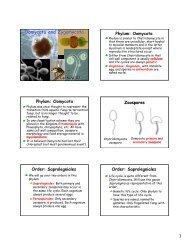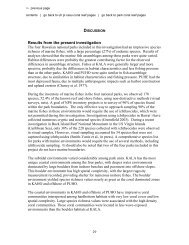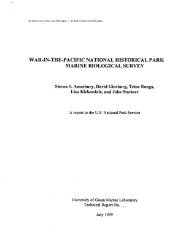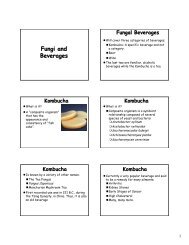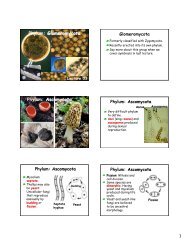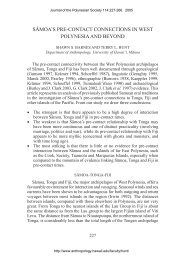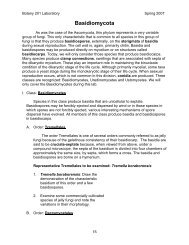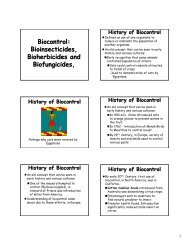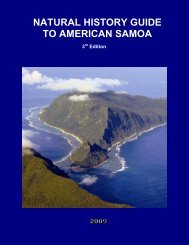american samoa - University of Hawaii at Manoa Botany Department
american samoa - University of Hawaii at Manoa Botany Department
american samoa - University of Hawaii at Manoa Botany Department
- No tags were found...
Create successful ePaper yourself
Turn your PDF publications into a flip-book with our unique Google optimized e-Paper software.
Stormw<strong>at</strong>er Discharges and Rel<strong>at</strong>ed Flood PotentialIn 1999, Pedersen Planning Consultants recently made a hydrologic analysis <strong>of</strong> potentialstormw<strong>at</strong>er discharges into Pala Lagoon th<strong>at</strong> could be gener<strong>at</strong>ed from a range <strong>of</strong> storm events(Pedersen Planning Consultants, 2000). Through hydrologic modeling, PPC determined th<strong>at</strong>potential stormw<strong>at</strong>er discharges into the Pala Lagoon can range from 739 cubic feet per second(cfs) for a 2-year storm and about 2,072 cfs for a 100-year storm. Consequently, significantstream flows can be carried by Papa Stream for more common 2-year events, as well as lessfrequent 100-year storms.TABLE 7-2STORMWATER DISCHARGES FROM PAPA STREAM INTO PALA LAGOON2,10,50, AND 100-YEAR STORM EVENTSIN CUBIC FEET PER SECOND (CFS)Loc<strong>at</strong>ion 2-Year Storm 10-Year Storm 50-Year Storm 100-Year StormPapa Stream 739 1,134 1,847 2,072Source: Pedersen Planning Consultants, 2000In November 1999, PPC also g<strong>at</strong>hered cross-sectional d<strong>at</strong>a along the 1,200-foot Papa Streamsegment to assess the capability <strong>of</strong> this stream segment to accommod<strong>at</strong>e these stormw<strong>at</strong>erevents. Cross sections were recorded <strong>at</strong> 100-foot intervals along this stream segment.With the applic<strong>at</strong>ion <strong>of</strong> hydrologic modeling, PPC determined th<strong>at</strong> potential stormw<strong>at</strong>er flowsare much larger than the capacity <strong>of</strong> the stream <strong>at</strong> each cross-section (Table 7-3). Oneimportant exception is the bridge culverts underne<strong>at</strong>h Route 1 (st<strong>at</strong>ion 1+00), which canaccommod<strong>at</strong>e stormw<strong>at</strong>er flows <strong>of</strong> about 2,162 cfs. Consequently, the culverts underne<strong>at</strong>hRoute 1 can support potential flows from a 100-year storm event.TABLE 7-3CROSS-SECTIONAL ANALYSISALONG PAPA STREAM SEGEMENTMaximum Stream FlowSt<strong>at</strong>ionSlope <strong>of</strong> Stream(percent)Through Cross Section(cfs)1+00 1.0 2,1622+00 1.0 3803+00 1.4 4204+00 1.5 6075+00 2.0 3446+00 1.2 1537+00 1.1 2228+00 1.2 3219+00 1.9 62910+00 1.6 51311+00 1.5 33211+80 1.3 292Source: Pedersen Planning Consultants, 2000American Samoa Wetland/Stream Restor<strong>at</strong>ion and Enhancement PlanFebruary 2001, Papa Stream, Page 7-6



